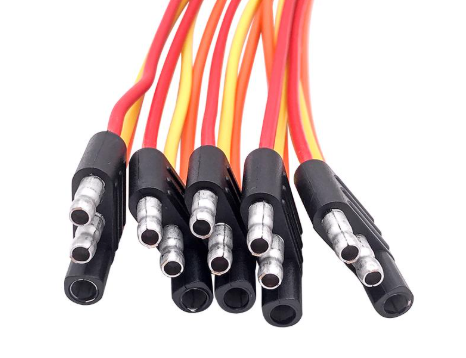How To Properly Store & Handle Cables To Prevent Damage: Best Practices
Cables are essential components in various industries, including automotive, industrial equipment, telecommunications, and consumer electronics. Proper storage and handling of cables ensure their longevity, maintain performance, and prevent costly damages. At SINNHONG ELECTRONICS, a trusted name among cable manufacturers in Vietnam, we prioritize quality and durability in all our custom cable and wire harness assemblies. In this guide, we’ll share the best practices for storing and handling cables to prevent damage and ensure their long-term efficiency.
Why Proper Cable Storage and Handling Matters
Cables are designed to transmit power and signals efficiently. However, improper handling, exposure to extreme conditions, or poor storage can lead to:
Electrical failures
Signal interference
Short circuits
Premature wear and tear
Increased maintenance costs
Following the right storage and handling practices can help avoid these issues and extend the lifespan of cables.
Best Practices for Storing Cables
1. Keep Cables in a Dry, Cool Environment
Excess moisture and high temperatures can degrade cable insulation and lead to performance issues. Store cables in a temperature-controlled, dry area to prevent damage from humidity and heat. We use advanced materials that offer superior insulation and durability, making our cables ideal for various environmental conditions.
2. Use Proper Reels or Spools for Storage
Cables should be stored on reels or spools so that cables do not deflect, twist and oppress each other themselves. When hanging wires are not properly illuminated and cables are piled up in an unorganized way, it is very likely that they will be broken from the inside. Cable manufacturers in Vietnam suggest that cables must be wound closely to stay in their original form or effectiveness.
3. Avoid Stacking Heavy Items on Cables
By weighing such equipment or masses above stacked cables the insulation of the wire cable conductors is damaged and the conductors are deformed. Do not leave cables unattended where they may be subjected to the highest load/stress.
4. Label and Organize Cables Properly
Management is also crucial to companies who use a large number of cables. Label cables based on their specifications, usage, and length. Proper labeling ensures easy identification and reduces handling errors. We offer customized cable solutions with accurate labeling and packaging for simple channel management.
5. Store Cables Away from Direct Sunlight and Chemicals
UV exposure degrades cable insulation with aging and chemicals attack these materials by corrosion. Keep cables stored in upright shelving so that they are protected from chemical, oil, and acid types of contamination. Our wires are furnished with high-quality insulated materials, which can withstand external stresses.
Best Practices for Handling Cables
1. Use Proper Techniques for Unwinding Cables
Do not try to pull/jerk on cables from the end of reels while engaged, as this will cause internal stress/cracking. Specifically, unroll the cables with a cable unwinding tool in a stress free way such that there is no twisting or knotting.
2. Avoid Sharp Bends and Kinks
Bending cables too far beyond their acceptable radius should result in conductor and insulation damage. See to it that the devices conform to the recommendations of the manufactures' bend radius, as otherwise the device might behave improperly. Based on the strongest reputation of cable manufacturers in Vietnam, we design the cables with the shock absorbing elastic material and the bending stress resistance.
3. Protect Cables from Excessive Tension
Cables with pulling forces exceeding their strain limits can result in cable inner stretching, reduced conductivity and consequently, risk of failure. Overlay cable trays, guides, or strain relief to enable installation in a low loading manner.
4. Use Proper Cable Connectors and Accessories
Using the wrong connectors or improperly attaching cables can lead to signal loss or loose connections. Always use manufacturer-recommended connectors for secure and efficient installations. We provide custom cable assemblies that are compatible with various industry standards.
5. Inspect Cables Regularly for Wear and Tear
Regular inspection ensures that cables remain in optimal condition. Check for:
Cuts or exposed wires
Burn marks or discoloration
Cracked or hardened insulation
Loose connections
If any issues are found, replace or repair the cables immediately to avoid failures. Our rigorous quality control process ensures that all our cables meet ISO 9001 standards, providing long-lasting reliability.
Why Choose SINNHONG ELECTRONICS for Your Cable Needs?
As one of the leading cable manufacturers in Vietnam, we stand out for several reasons:
1. High-Quality Manufacturing Standards
We are ISO 9001 certified, ensuring that all our custom cable assemblies and wire harnesses meet the highest quality standards. Being one of the top cable manufacturers in Vietnam and China, we use state-of-the-art automation technologies for precision and efficiency.
2. Cost-Effective Solutions
Vietnam’s low labor costs and favorable tariffs allow us to offer competitive pricing without compromising quality. Being one of the top cable manufacturers in Vietnam, we help businesses reduce costs while maintaining high-performance products.
3. Wide Range of Custom Cable Solutions
Being one of the top cable manufacturers in Vietnam, we provide industrial cable assemblies, telecommunication cables, automotive wiring harnesses, power cables, and more. Whether you need simple or complex designs, our engineering team can create tailor-made solutions to meet your specifications.

.png)


Comments
Post a Comment